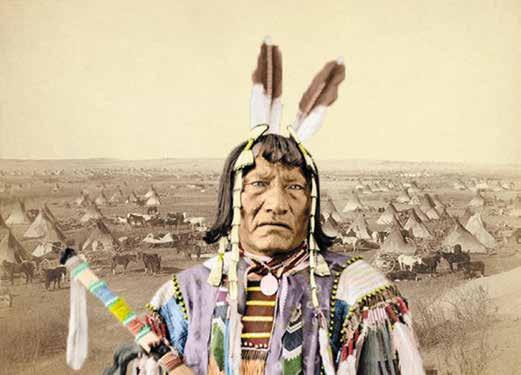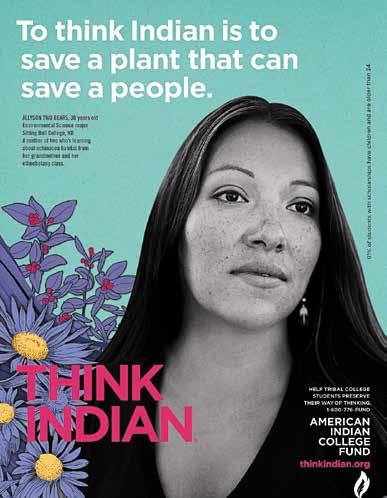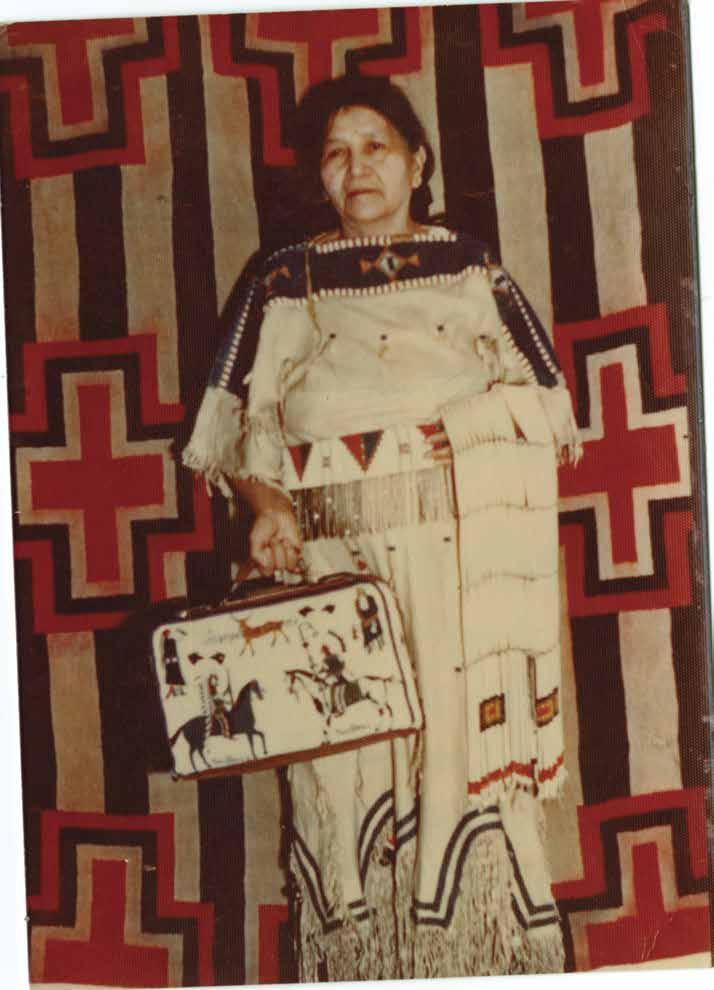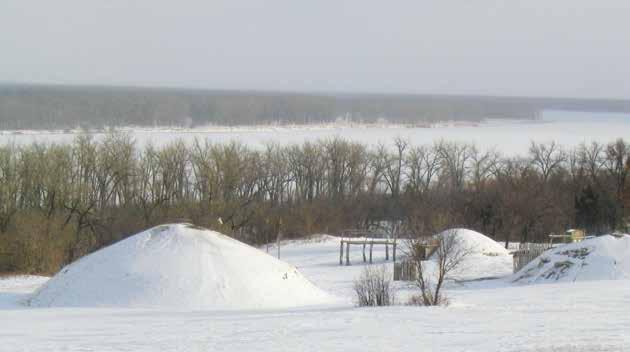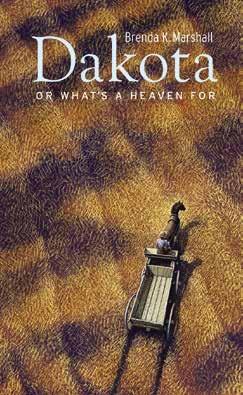
18 minute read
Returning to Local Tribal Values: Think Dakota, Live Dakota
By Cynthia Lindquist and Albert Red Bear
To Think Dakota, Live Dakota is to understand and to practice the divine laws or values of Dakota people: honesty, respect, courage, humility, generosity, fortitude, and wisdom. These laws or values unite the people with compassion. All are one and the same as everyone practices the same beliefs. Since the values come from Creator they are understood to be “natural law” which is rooted in common sense. Creator gives us these things to use, to take care of, and to pass on to our children and grandchildren.
Advertisement

Traditionally, the Dakota Oyate (Nation) lived with the Tatanka Oyate (Great Buffalo Nation) and followed their migration patterns. Following the buffalo taught the Dakota how to live in a respectful manner. Boundaries were set that emanated from understanding the relationship (human/animal) and using or taking only what was needed. Tatanka was a divine animal who taught the Dakota to be resourceful. The buffalo moved by the seasons to where there were different grasses, plants, and berries. To Think Dakota is to understand our relationship with the animals and how they give so much to us as human beings. Our survival is due to the buffalo and other animals. To Think Dakota is to understand that food is what you become and that the process of eating is a sacred thing.
Time and process are components of commonality in Dakota spiritual beliefs. Dakota people think in terms of cycles or circles and believe in a cyclical time frame—life cycle, the seasons, and the directions—as well as the concept of what goes around, comes around. Nature is designed with circular patterns (the earth, sun, moon, planets, etc.). The cyclical path of life—birth, adolescence, adulthood, and elders—and the cyclical changing of the seasons symbolize for Dakota people their spiritual significance. To Think Dakota, Live Dakota is to bear the responsibility to understand the relationships and roles necessary to maintain harmony and balance with and in these cycles.
Thinking Dakota is to understand relationships or connections—with people, with animals, with the environment, and most importantly with Wakan Tanka (the Creator). The White Buffalo Calf Pipe Woman brought the Dakota people the pipe as the means to pray to the Creator, along with seven sacred ceremonies. The ways of the pipe are instructions on relationships and how to live in a good way. The pipe symbolizes the gifts of Creator with the bowl created of red stone from Mother Earth and carved as a buffalo that represents the four-legged animals; the wood stem represents all that grows upon the earth; the eagle feathers represent the winged ones; and the (natural) tobacco used to fill the pipe symbolizes the connections with the smoke sending the prayers to the spiritual powers.
The seven ceremonies are: the vision quest, the sweat lodge, becoming a woman, the sun dance, the making-ofrelatives, keeping the spirit, and throwing the ball. These ceremonies help the people to live in a good way and according to the Creator’s values. To Think Dakota is to understand that while there are hard times the values and the ceremonies will see us through and that life is still good no matter how hard it gets. The Dakota people made a covenant with the Creator to live a spiritual life based on understanding the relationships and connections with the universe and the living beings within that universe.
Dakota ceremonies honor the unique character of each cycle of life, as well as the interwoven texture of the entire cycle of human existence. We are taught that spiritual power exists and affects humans even though it may not be seen. Human participation is essential to maintaining the relationship of harmony between the natural environment and the supernatural. Ceremonies to commemorate birth, puberty, relatives and family, death, and self-awareness are all honored by rituals that reinforce relationships and are viewed as promoting the well-being of the individual, the family, and the community. These rituals unite the members of the community in a shared
experience that both honors the spirits and strengthens the bonds of the community. To Think Dakota, Live Dakota is to always have prayers as part of any gathering.
The four directions as understood by Dakota are related to the relationships we have as humans with the four seasons, the cycles of life and their spiritual foundation.
• West/black symbolizes spiritual strength, doctoring, thunder beings and the buffalo nation. • North/red signifies physical, natural law/common sense, truth and the elk. • East/yellow symbolizes emotional health, new life/beginnings and the black tail deer. • South/white signifies healing ways, wisdom, elders and the owl nation.
Some elders have stated that the four directions/colors represent the human races of Mother Earth. Each race is linked to the balance and harmony of nature. The other colors look to the Red nation for wisdom in understanding relationships.
To Think Dakota, Live Dakota is to know that our language is rooted in spirituality and is the foundation for being Dakota. The songs come from the spirit world and the drum reflect the heartbeat of Mother Earth and the people. In singing Dakota songs, the spirits help us to find the medicines, provide directions for healing. Dakota names and titles set boundaries for relationships—using Mother Earth or Grandmother Moon has much more relevancy than saying “earth,” as does using Uncle or Auntie for family relations.
Language and the use of words are integral to Thinking Dakota. The use of words is critical to the oral traditions of Dakota culture. Storytelling reflects the reenactment of an event that is not bound by time. Equally important are the appreciation and sanctity of silence and of words not spoken. Silence is sacred and has spiritual power for Dakota people.
To Think Dakota, Live Dakota is to understand that our education process is rooted in learning about relationships that is informally taught by the parents, grandparents, and elders. Learning is via application and imitation with emphasis placed on sharing and cooperation. The focus is on the whole versus the individual.
While many of these sentiments or concepts are old traditions, they are very much alive and the heart of Think Dakota, Live Dakota. We continue the journey of our ancestors to be stewards of Mother Earth and to understand our role as human beings to be resourceful, respectful and resilient.
Cynthia Lindquist is member of the Spirit Lake Dakota Nation. She is currently serving her people as president of Cankdeska Cikana Community College. Albert Red Bear is a self-employed artist, member of the Oglala Lakota Nation (Wajaja descendant), and Native American Church leader.
Josephine Gates Kelly: Standing Rock Sioux Tribal Leader
By Susan Kelly Power (Josephine’s daughter)
Josephine Gates Kelly (Wanahca Tindah Wastewin, or Her Good Work Brings Flowers Woman) was born on Battle Creek in January of 1888—the year before North Dakota would become a state. She liked to remind people she was born
the same year as the Great Blizzard. “I came into this world during a blizzard, and I’ll probably leave it the same way!” Her parents were Nellie Two Bear (Mahpiya Bogawin, or Gathering Clouds Woman) and Frank Gates (Sasway, or Blood Red). Sitting Bull was still alive during Josephine’s first three years, and his leadership made such an impression on her—memories of his gentle ways, love for his people, his prescient vision of the challenges to come—that in one sense he never died. Yet, she had seen firsthand evidence of the slaughter. The morning of December 15, 1890, when Josephine was a month shy of her third birthday, her father wrapped her in his great overcoat and held her in front of him as they rode into town. Someone had brought word that there was danger, guns fired, rumors that the old chief was injured. Frank Gates’ sons weren’t born yet, so Josephine would be his fellow witness that cold day. She saw the wagon that brought Sitting Bull’s body into town, and the mourners who gathered behind it, though at a distance, fearful of the soldiers and their guns. They were crying and singing, stunned with grief as if they had lost a part of their own body, an arm, a leg, a beating heart. She would later say she saw blood in the snow. When they lifted him from the cart? His wounds still new? One leader was lost, but another, held against her father’s warm body, her large eyes seeing everything, was being born.
Josephine Gates, graduation from Carlisle Indian School, 1909.


Sitting Bull was not the only one to shape Josephine’s conception of what made a strong Dakota leader. Her mother, Nellie, was the daughter of Chief Two Bear (Mahto Nunpa, or Two Bear), a widely respected council chief. Nellie raised Josephine with stories of Two Bear. She herself had been a young girl in 1863 when her father’s Yanktonai village was suddenly attacked by Union General Alfred Sully. Sully was acting on orders from General Pope in the Sioux Campaign of 1863. When Two Bear saw the troops arranged against them, he and his eldest son offered themselves as hostages to be taken by the generals while they negotiated a peace in order to spare the lives of innocent families. The offer was refused, and a massacre ensued at what is now Whitestone Hill Battlefield State Historic Site. The Yanktonai barely survived.
Josephine heard other stories about her grandfather from elder warriors who were still living when she was a girl: Yanktonais like Little Soldier, Has Tricks and Callous Leg. Grandfather Little Soldier, the one the children called Tunkasila (Grandfather) was a particular favorite. Little Soldier had been with the Indian Police when Agent James McLaughlin ordered his men to bring in Sitting Bull, “dead or alive!” Little Soldier would not follow such an order, so that day he quit the police force, abandoned his uniform and went back to wearing moccasins, never to sit in a chair again. In later years, when Josephine was a grown woman with children, living across the road from the Hunkpapa chief’s original grave, Little Soldier would still come to town to visit the grave and then walk on to Josephine’s cabin to pay his respects. Her children would see him coming and excitedly retrieve a clean square of canvas, reserved for this special guest, from the kitchen cupboard. They spread it on the floor, covered it with dishes and food, and then waited for the old warrior to arrive, to eat his fill. They sat quietly, ears and eyes open, hoping for a story. They preferred his reminiscences of Sitting Bull to the ones he told about Two Bear, their own ancestor, since they heard so much about him already from their mother. Sitting Bull was the leader who was still alive for them, his grave a refuge when they needed to share their sorrows.
Sitting Bull’s original grave, Fort Yates, North Dakota “Lala,” they called him, “Lala,” they would cry when they felt misunderstood. Josephine scolded them for pestering his spirit, “Don’t whine to him,” she warned. “He liked to hear people laugh. Make sure your voices are happy when you visit him.” But Sitting Bull was always the first to hear their grievances.
Josephine left the Standing Rock Sioux Reservation for many years while she attended the Carlisle Indian Industrial School, halfway across the country in Pennsylvania. She arrived at the age of nine years old and graduated in 1909, when she was twenty-one. She was a classmate of the famed Indian athlete, Jim Thorpe, and years later in Denver, during a meeting of the NCAI (National Congress of American Indians), a group of Carlisle graduates gathered to share memories. Jim Thorpe approached the group and pointed to Josephine, saying, “You taught me how to dance, didn’t you?”
“I guess I did,” Josephine answered, laughing. Jim then pulled her to her feet to prove he hadn’t forgotten what she taught him. They began to dance. A circle of onlookers gathered around them, and when they completed the demonstration, Jim escorted Josephine back to her seat. A newsman in attendance whispered wistfully to Josephine’s daughter, “If only this moment could have been captured on film!”
When Josephine returned to Standing Rock in 1909, she discovered her parents had built her a house since they figured she was used to white ways and a white style of living. For the twelve years at school, her primary language had been English, but she quickly relearned her original language, Dakota, and could also speak Lakota, and Nakota. For a time she worked at managing a mercantile store in McIntosh, South Dakota, which was owned by her brother-in-law, Joseph Archambault, until she married a man named Godfrey and moved with him to Montana where their son, John, was born. After her husband’s death she returned to the reservation and eventually married Colvin Kelly—a grandson of old Charles Primeau, whose sons were well-known interpreters between Dakota people and the white agency officials. Her second husband, Colvin, was disgusted with government injustices and abuses and spoke out against the Bureau of Indian Affairs. After receiving an appendectomy in a government hospital, he was forever plagued with complications that required him to return again and again, each time more of him cut away, until it was reported that he had been operated on more than anyone in the area—twenty-two surgeries in all. Many elders were convinced that BIA officials were behind his suffering, that they ordered the butchery as punishment for all his inflammatory speeches. Colvin’s life was a misery of pain, but he continued to warn his people of the dangers of federal government policies, and he and Josephine fought against John Collier’s proposed Indian Reorganization Act which would remove traditional practices of governance. Their home became a hotbed of discussion, counsel, and strategizing. Elders would travel from great distances to hear Colvin speak; he used Dakota terms that were not often heard any longer, his extensive vocabulary a feast for their hungry ears. Colvin left Standing Rock in the 1930s and settled on the Rosebud Sioux Indian Reservation in South Dakota for a time, but Josephine remained and continued the fight to preserve a traditional way of life for her people.
In 1932 Josephine was appointed deputy county auditor for Corson County in South Dakota. That same year the registrar of deeds retired and encouraged her to run for his position. At that time few women of any background ran for public office, let alone a Native woman, but the registrar worked hard to get her elected, saying, “Josephine will do a good job. She knows the work better than I do.” Her opponent was Hugh McCormick, a white attorney supported by a handful of voters who were committed to continuing the practice of securing Sioux lands at very cheap prices. Josephine lost by a slim margin, but without bitterness she took the time to teach McCormick the job and was always available when he needed her help.
In the 1930s Josephine was one of many Dakota people who opposed the Indian Reorganization Act, believing its passage would destroy the traditional leadership structure, demoralizing the people and undermining their kinship ties and ancient values. She worked with a team to inform the people of what
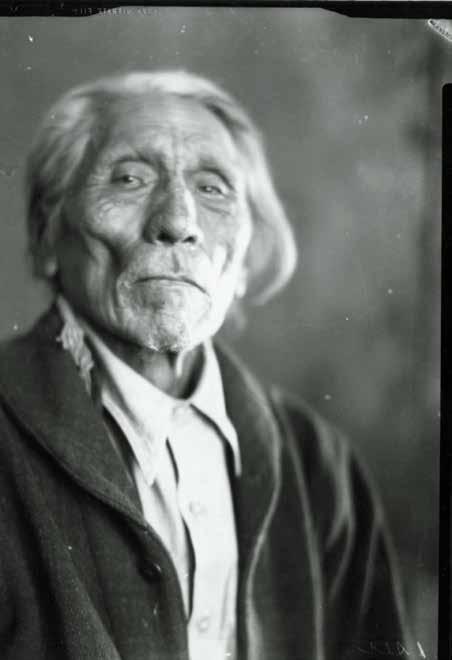
was at stake, and because of their diligent organizing, the Standing Rock Sioux Reservation ultimately rejected the act. However John Collier, Commissioner of Indian Affairs, then at the height of his political power, pushed the act through for all tribes, disregarding their protests. Eventually, after the passage of the new act, Josephine’s only brother, John Gates, became the first tribal chairman of the Standing Rock Sioux Tribe, and went on to serve three more terms in that position. The Yanktonai were the largest group of Sioux on Standing Rock at that time and they pressured Josephine to become active in tribal affairs. Ever mindful of her grandfather’s example, she did what was expected of her and was elected as tribal councilwoman. In 1946 she became the first Native woman to serve as a chairwoman of a tribe. Josephine served until 1951. In her leadership role she was constantly reminding people that in the earlier days when our chiefs signed treaties which detailed the federal government’s obligations to Indian people, the chiefs believed they were securing a future for generations to come. She called for the government to keep their promises to the tribes, and encouraged her people to never give up their rights as designated by these binding treaties.
During the desperate years of the 1930s, working on behalf of the tribe, Josephine and fellow council members hitchhiked to Washington, D.C., on several occasions to meet with government officials, and in one instance, attempted to meet with the president. They carried their few clothes and some food in paper sacks, and knew that once they reached Chicago a woman from Standing Rock named Anna Pleets Harris would offer shelter and assistance, which she did. Josephine was able to meet with Eleanor Roosevelt on one of these trips, and although the First Lady pushed her husband to meet with the tribal leaders, this was as far as they would get. For the children left behind, this was a fearful time, for they’d heard stories of how Indian leaders were sometimes poisoned by the government, and they didn’t know if they’d ever see their mother again. But Josephine had taught them to be dependable and strong, and trusted them to take care of one another.
Josephine’s activism continued throughout the decades. In 1951 the NCAI held their convention in Saint Paul, Minnesota, and honored Josephine for her strong leadership resulting in a victory for all Indian people—the right to employ legal counsel of their own choosing. This ended the BIA practice of appointing legal representatives for tribes. In her short acceptance speech she thanked the Standing Rock Sioux Council members and the many individuals who worked to improve the lives of others. In 1952 she collaborated with Ramona Kaiser, a nonNative woman from Ohio, to create a memorial at Valley Forge in honor of the many American Indians who died defending their country. And when the government began making plans to build the Oahe Dam, she and the rest of the tribal council strongly
Little Soldier, 1938
opposed the construction, anticipating how devastating the dam would be, flooding reservation lands. But the Army Corps of Engineers prevailed, and the council then negotiated with the government to obtain the best possible lands in exchange for areas that were taken.
Josephine was active in many political arenas, not just those pertaining to Indian affairs. She was a member of the Nonpartisan League, and a good friend of Senator William Langer, Congressman Usher L. Burdick, and his son, Senator Quentin Burdick. She loved people of all backgrounds, and had a wonderful sense of humor. She could make a point using wit and a measure of surprise such as the time she met with Bill Zimmerman, Assistant Commissioner of Indian Affairs from 1933 to 1950. Early in his tenure she arranged a meeting with him and he was already nervous when she arrived, given her reputation as “the BIA’s Number One Agitator.” Mr. Zimmerman opened his door, ushered her in, and was about to take his seat when she told him, “No, don’t sit down.” He paused. “Go around your desk,” she ordered. He looked confused. She moved to chase him, and they ran around his desk a couple of times before she paused and sat down in a chair. “There now,” she said with a smile. “That’s what you expect of a wild Indian. We got that out of the way. Let’s talk.”
Despite Josephine’s struggles with the federal government, she was a devoted patriot and a Gold Star Mother: six of her eight children served in the armed forces, four of them during World War II. This service wasn’t limited to her sons; her eldest daughter became an army nurse cadet, and a younger girl quit her job as a riveter in Seattle to become one of the first, perhaps the first, Native woman marine. When the Korean War erupted, Josephine’s third son became a decorated soldier, and her youngest son, Louis, was killed in that war just two weeks before his eighteenth birthday. He is buried in Arlington National Military Cemetery.
Josephine died in 1976, and on a cold November day, after a blizzard had passed through town delaying services and burials, a Mass was held for her and she was laid to rest in Saint Peter’s Cemetery, the same ground where her grandfather, Two Bear, was buried. The officiating priest said of her: “I did not have the privilege of knowing this woman, but have learned much about her these past few days. Many have told me what a great lady she was. And it’s fitting to have symbols of Josephine’s heritage: a star quilt and eagle feather war bonnet, an altar cloth and crucifix, together adorning her casket.”
Josephine waged her battles at a time when there was no media interest in agitation work. She and her fellow tribal council members served their people without salaries or expense accounts. They didn’t own automobiles or telephones. Josephine used a large packing box which had once held ration tea as her file cabinet, and a patched cloth bag for a briefcase. Yet she walked many miles on behalf of her people.
Approximately when she returned from Carlisle after the long separation at boarding school, the community gave this young woman a new name, seeing some quality in her that reminded them of her grandfather. They called her Wachinoyapi Win, The Tribe Looks to Her for Help Woman.
Susan Kelly Power was born in Fort Yates, North Dakota, in 1925. She is the great-granddaughter of Chief Two Bear, and the daughter of Josephine Gates Kelly. She is a tribal historian and the last surviving founder of the American Indian Center in Chicago.

